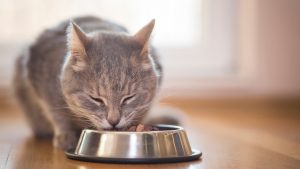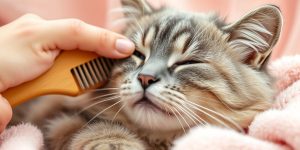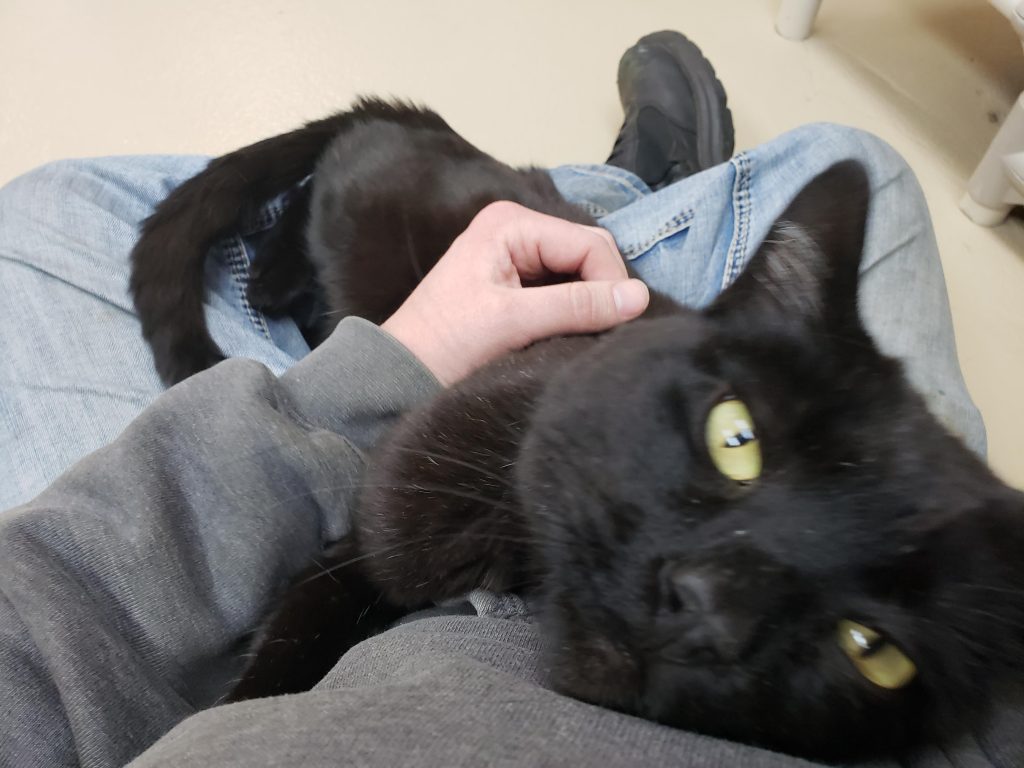Welcome New Cat Parents!
Introduction: Ensuring Optimal Nutrition for Your Cat
Welcome to our text-based self-guided online lesson on how to care for and train your new feline friend! One of the most important aspects of cat care is ensuring that your furry companion receives the proper nutrition. A well-nourished cat will be healthier, more energetic, and have a stronger immune system, creating a positive living experience for both you and your pet.
In this lesson, we will provide you with detailed solutions and step-by-step guidance on how to meet your cat's nutritional needs effectively. By following these instructions and tips, you will be able to establish a successful feeding routine for your cat, leading to a happier and healthier relationship between you and your new furry family member.
Understanding the nutritional needs of your cat is essential for their overall health and well-being. Cats are obligate carnivores, which means they require a diet high in animal-based proteins to thrive. When choosing a cat food, look for options that list a high-quality protein source, such as chicken, turkey, or fish, as the first ingredient.
In addition to protein, cats also need essential vitamins, minerals, and fatty acids in their diet. Make sure the cat food you choose is formulated to meet the nutritional requirements of cats at different life stages, such as kitten, adult, or senior.
It's important to provide fresh, clean water at all times to keep your cat hydrated. Proper hydration is crucial for maintaining healthy kidney function and preventing urinary tract issues.
While it may be tempting to feed your cat table scraps or human food, it's best to stick to a balanced cat food diet to ensure they are getting all the nutrients they need. If you have any concerns about your cat's diet or nutritional needs, consult your veterinarian for personalized recommendations.

When it comes to caring for your cat, one of the most essential aspects is providing the right nutrition. Cats are obligate carnivores, meaning they require a diet that is rich in animal-based proteins. There are various types of cat food available in the market, each offering different benefits.
Dry Cat Food: This type of cat food is convenient and has a longer shelf life compared to wet food. However, some cats may not drink enough water when consuming dry food, which can lead to dehydration.
Wet Cat Food: Wet cat food has a higher moisture content, which can help keep your cat hydrated. It is also usually more palatable for cats and can be beneficial for those with dental issues.
Raw Cat Food: Some cat owners opt for a raw diet for their cats, which aims to mimic what cats would eat in the wild. It is essential to consult with a veterinarian before transitioning your cat to a raw diet to ensure it meets their nutritional needs.
Prescription Cat Food: In some cases, cats may require special diets due to health issues such as kidney disease, diabetes, or allergies. Your veterinarian can recommend prescription cat food tailored to your cat's specific needs.
Homemade Cat Food: If you prefer to prepare your cat's food at home, it is crucial to do thorough research and consult with a veterinary nutritionist to ensure your cat's diet is balanced and meets all their nutritional requirements.
Ultimately, the best type of cat food for your feline companion will depend on their individual preferences, dietary needs, and any underlying health conditions. It is essential to provide a balanced diet to keep your cat healthy and happy.
When it comes to training your cat to use the litter box successfully, establishing a consistent feeding schedule and portion control are crucial factors to consider. Cats are creatures of habit, and their bathroom habits can be influenced by their feeding routine.
Start by setting specific meal times for your cat and sticking to them every day. This will help regulate their digestive system and, in turn, their bathroom schedule. Avoid leaving food out all day for your cat to graze on, as this can make it harder to predict when they will need to use the litter box.
Additionally, portion control is essential in maintaining your cat's overall health and preventing bathroom accidents. Follow the recommended feeding guidelines based on your cat's age, weight, and activity level. Overfeeding can lead to obesity and digestive issues, which may affect their litter box habits.
By establishing a consistent feeding schedule and practicing portion control, you are not only promoting your cat's well-being but also setting them up for success in learning to use the litter box appropriately.

Monitoring Your Cat’s Weight and Body Condition
Maintaining a healthy weight is critical for your cat’s overall health. Regularly monitoring your cat’s body condition can help prevent issues like obesity, which can lead to diabetes, joint problems, and heart disease. Look for signs such as difficulty jumping, lethargy, or an inability to feel the ribs under a layer of fat. If you’re unsure whether your cat is at a healthy weight, your veterinarian can show you how to evaluate body condition using a simple scoring system and offer advice on adjusting food portions or switching to a weight-management formula if necessary.
Incorporating Treats and Supplements Wisely
Treats can be a great way to reward your cat or reinforce training, but they should not make up more than 10% of your cat’s daily caloric intake. Overuse of treats can lead to nutritional imbalance and weight gain. Opt for high-quality treats that complement your cat’s diet, and avoid those with excessive fillers or artificial additives. Additionally, some cats may benefit from supplements such as omega-3 fatty acids for coat health or probiotics for digestive support. Always consult with a veterinarian before adding supplements to your cat’s routine to ensure safety and necessity.
Transitioning Between Cat Foods
If you need to change your cat’s diet—whether due to age, health conditions, or preferences—it’s important to do so gradually to prevent gastrointestinal upset. Begin by mixing a small amount of the new food with your cat’s current food, gradually increasing the proportion over 7–10 days. Watch for signs of digestive distress, such as vomiting or diarrhea, and slow the transition if needed. A gradual approach not only helps with digestion but also increases the chances that your cat will accept the new food willingly.
Wrapping Up Your Cat’s Nutritional Needs
Remember Your Goal
As a new cat parent, one of the key objectives in caring for your feline friend is ensuring they receive proper nutrition consistently. This not only helps maintain their health but also fosters a positive relationship between you and your cat.
Should you encounter challenges along the way, feel free to revisit this lesson for guidance. Additionally, don't hesitate to explore the other insightful lessons in this course to enhance your cat care skills. By staying committed to your goal and being patient with your cat, you can successfully ensure they lead a healthy and happy life.

